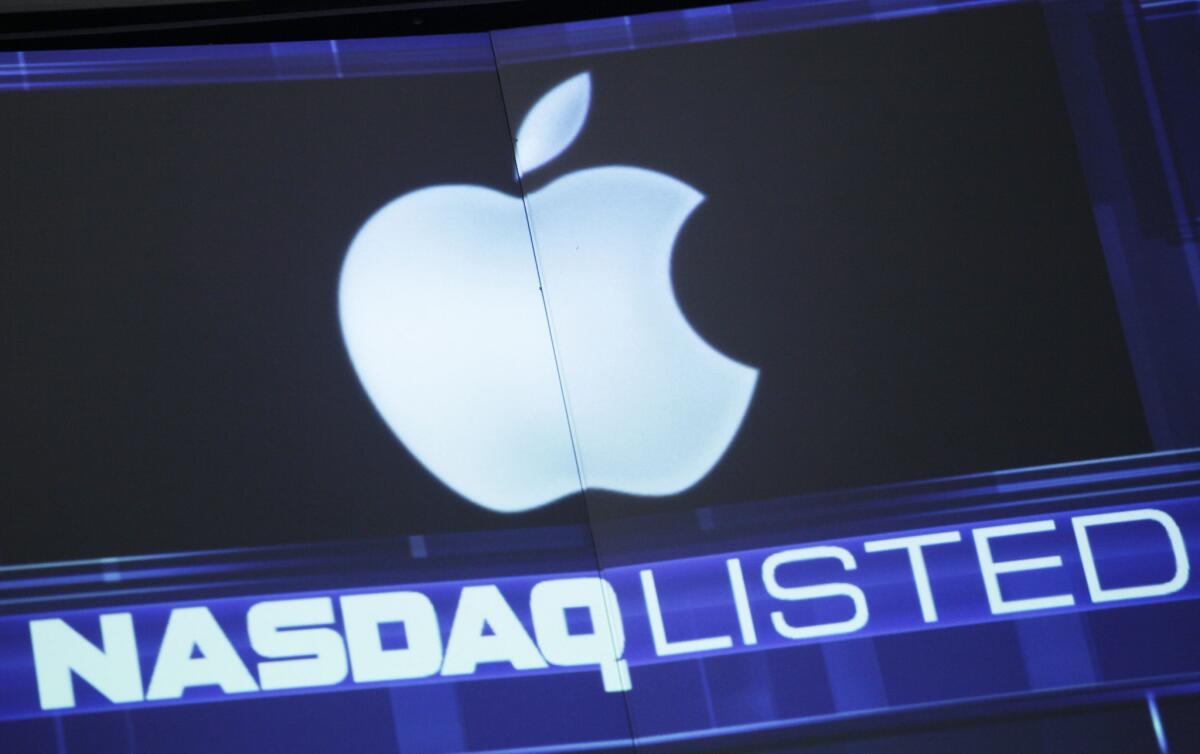Has the Apple stock ‘slingshot’ begun?

- Share via
This post has been updated.
Back in December, while I was writing a story about the extraordinary volatility of Apple’s stock, one trader used the term “Apple slingshot” to describe the ups and downs of its shares.
Basically, the idea is that the stock experiences such wild fluctuations for such a huge stock. Each time it dipped to a new low over the past several years, it then rocketed back even further to a new all-time high. Like pulling back on a slingshot and then releasing it.
PHOTOS: The top smartphones of 2013
It just takes a strong stomach to hold on.
With the stock on a strong run the past week, I wonder: Are we seeing the latest Apple slingshot?
The stock opened strong on Monday, rising 3.17% or $13.24 to $430.44 in mid-day trading. That means the stock is up 10.2% since it closed at its most recent low of $390.53 on April 19.
The company reported earnings last Tuesday and at first glance, it appeared investors were torn about how to interpret the results. On one hand, the company reported its first earnings decline in a decade and slowing growth. On the other hand, the company announced an increase in its dividend and a massive stock buyback plan.
When the stock began trading on Wednesday, it bounced between big gains and big losses initially as indecisive investors seemed to battle each other to determine whether what they heard was good news or bad. But eventually, the stock settled and restarted the climb it began Monday, before earnings were announced.
The question investors must now face: Is this this beginning of a trend that could get the stock anywhere near, or even past, the $702.10 peak it reached last September?
Update: Apple’s stock closed Monday up 3.10% or $12.92 to $430.12.
ALSO:
Apple takes investors on a wild ride
Apple to spend $100 billion to buy back shares, raise dividend
Consumers’ shift to older iPhones raises concerns on Wall Street
More to Read
Inside the business of entertainment
The Wide Shot brings you news, analysis and insights on everything from streaming wars to production — and what it all means for the future.
You may occasionally receive promotional content from the Los Angeles Times.











